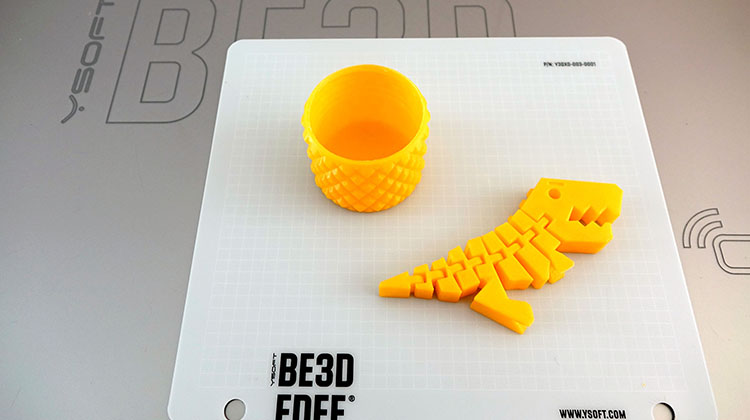How 3D printing benefits teachers

3D printing has inspired a new generation of learners by combining problem-solving skills with technical skills, creativity, and innovation. However, the benefits of 3D printing aren’t limited to students, and teachers have much to gain by introducing 3D printing into their lesson plans.
There are seven key ways teachers can benefit from 3D printing:
1 Reduce lesson planning time
While this may seem counterintuitive, adding a new element like 3D printing can actually give teachers more time to focus on engaging with students. Teachers can use a set of pre-prepared 3D lesson plans that use rich video, 3D models, and other resources. This reduces their lesson planning time and lets students immerse themselves in a hands-on learning experience to complete projects.
2 Increase physical and virtual engagement
When teachers use 3D printing as part of the curriculum, they tend to see increased student engagement. With easy-to-use curriculum materials online, students can engage whether they’re in the physical classroom or not. This can be useful for teachers who may otherwise struggle to get students to actively engage with lessons.
3 Higher exam and assessment scores
Student engagement can predict academic performance and behaviour. Seeing students succeed is a key motivator for many teachers; adopting solutions that improve engagement with science, technology, engineering, and maths (STEM) subjects can help improve engagement and, as a result, exam and assessment scores. 3D printing lets educators illustrate complex concepts and enhances engagement through fun and interactive learning, boosting results. 3D printing improves the core skills required to succeed at school and in life, such as critical and creative thinking and problem solving. With 3D printing, students absorb and retain information in a different way.
4 Attracting more students
The 3D printing industry is booming and could change how people work, play, and live. Offering 3D printing courses helps prepare students for the future, leading these courses to become highly sought-after. Educators that demonstrate successful adoption and application of new technology like 3D printing are likely to attract new students which could, in turn, attract additional funding and opportunities.
5 Setting students up to succeed
3D printing provides a great way for students to learn from fail, persevere, and find solutions. Even typically reluctant learners tend to become motivated and engaged when presented with opportunities to use 3D printing. Even reluctant teachers can find inspiration in each other as they experience their first 3D model success.
6 Recognition and legacy
Today’s teachers didn’t grow up with 3D printing, which means they’re modelling lifelong learning by engaging with this new technology. This leaves a lasting impact on students who can be inspired and motivated by seeing their teachers stand up as innovators and adopters of future technology and teaching methods.
7 Empowerment
Teachers have full control over how to integrate 3D models and printing into their lessons, and they are supported by a wealth of resources. Adopting 3D printing means educators can experience future technology and use it to make abstract ideas more concrete. This also lets educators become more creative, offering a new tool to try a different approach to the subject, inspiring and energising teachers and students alike.
The role of a teacher is to cultivate inspiration in their students. Exam results are a by-product of that mandate. The spark of inspiration is integral to ensuring both teachers and students reach their potential with long-lasting results. 3D printing delivers a fresh and creative edge for teachers as well as students. It helps teachers prepare themselves and their students for the future.